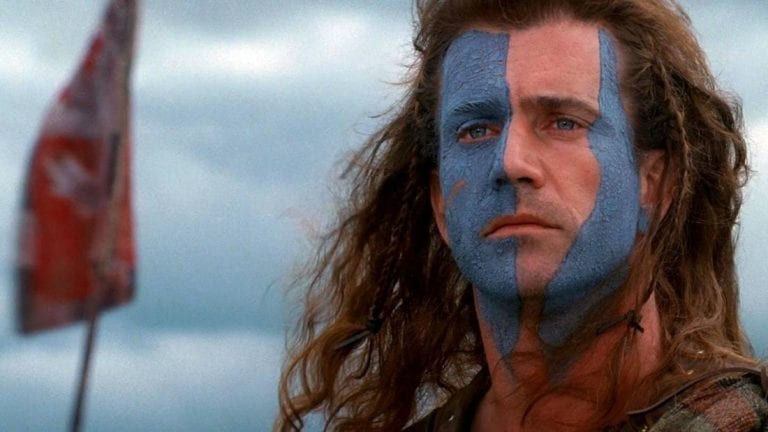"Based on a true story" can mean a variety of things, but in most cases, it translates to: "we promise a nugget of truth, somewhere." What's important is that it makes for a good story, right? You decide.
Ridley Scott and Burt Reynolds' Gladiator (2000)
"Are you not entertained?" Clearly not if you're a history buff. Though much of the public had no qualms over Russell Crowe's portrayal of a tragic sword-wielding hero, there were many who noticed that the film had it's share of inaccuracies. Don't get us wrong — the film was great (not to mention the awesome soundtrack).
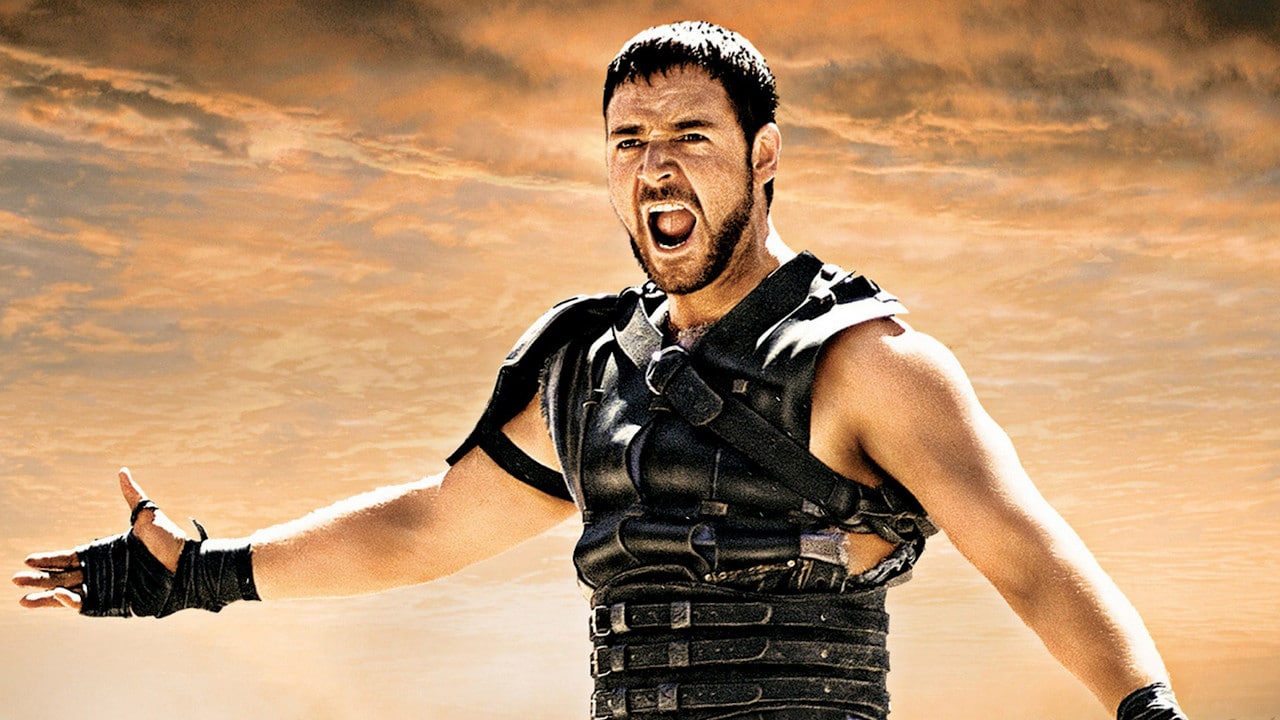
But there were some scenes that didn't quite match up to Roman history. One of them is Crowe's character Maximus Decimus Meridius. First of all, he never existed. Sorry, guys. Didn't mean to burst your bubble. Alas, we afford Hollywood this poetic silence. Though Maximus himself wasn't real, the people who surrounded him certainly were, and boy did they get their bios twisted.
Nobody murdered anybody
The supporting characters in the movie, played by Joaquin Phoenix as Commodus, and Richard Harris as Marcus Aurelius were very much real historical figures. However, besides Caesar, nobody was murdered. Though the Roman emperor did die, he wasn't murdered by his son. Instead died from a much lower entertainment value bout of chickenpox.
As for Commodus, he wasn't killed by a gladiator, but by a wrestler by the name Narcissus while taking a bath. If that wasn't enough, Roman historians add that Commodus was a well-liked emperor and ruled for 12 years, despite the movie's depiction of him as a mad man with incestuous motives.
John Madden's Shakespeare in Love (1998)

Joseph Fiennes is an absolute babe as Shakespeare. Rugged looks, complete with long lashes, and tousled hair, he can be the Romeo for our inner Juliet any day. Alas, despite the lovely story with co-star Gwyneth Paltrow, the movie is just riddled with historical inaccuracies.
For starters, in the film, the English monarch, Elizabeth I, made a personal appearance at the public theatre. That never really happened. Though her highness was known to enjoy a play or two, she wouldn't have viewed the performance in a public space where peasants gathered. In true royal fashion, she demanded a private performance in her palace.
Romeo and Juliet wasn't created by William Shakespeare
We wish we can say the queen was the only inaccuracy in the film, but we also have to point out the elephant in the room. Romeo and Juliet was not inspired by his affair with Paltrow's character Viola. In fact, historians have reason to believe that Shakespeare didn't come up with the play at all.
Though he adapted the story in play, according to Britannica, the play was actually inspired by the poem The Tragicall Historye of Romeus and Juliet by English poet Arthur Brooke. Brooke also didn't quite come up with the plot line of the two star-crossed lovers either. He translated the story from an Italian monk and writer, Matteo Bandello, who was known for his romantic and dramatic writing elements. Mark Twain was right when he said, "there is no such thing as a new idea."
Milos Forman's Amadeus (1984)
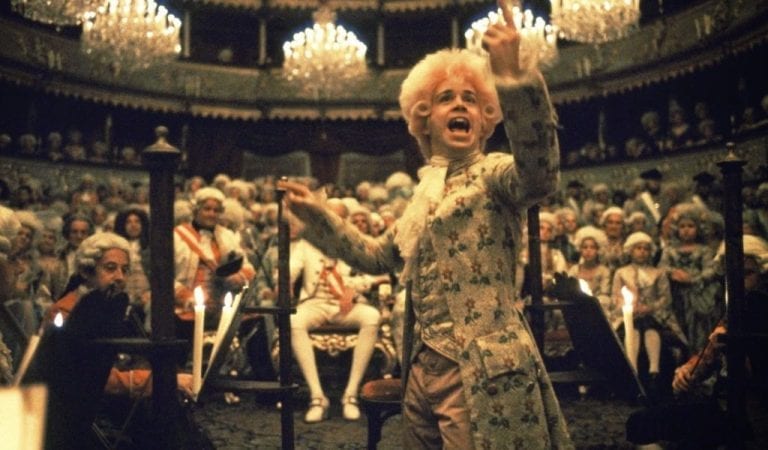
Who can ever forget the scene where F. Murray Abraham's character, Antonio Salieri, was spun in a moment of rapture as he "heard the voice of God" in Mozart's music and thus spilled the scores all over his Persian rug? Trick question: scenes like that can't be forgotten. Amadeus was one of the biggest movies of the decade.
It won eight statuettes at the Academy Award, including best film, director, and adapted screenplay. Although the film itself was a joy creatively and an obvious masterpiece, there were some serious historical inaccuracies some historians can't overlook. One of which is the relationship between Salieri and Mozart. Their so-called bitter rivalry was completely and utterly false.
Both musicians had a professional relationship
Let's clear a couple things up. The first, Salieri was not a sexually frustrated musician. He was in fact married with eight — yes, eight children — and was also known to have a mistress on the side. Second, he and Mozart had a friendly relationship, contrary to the film's portrayal. The notion of a bitter rivalry was most likely conceived from famed Russian writer, Alexander Pushkin.
Pushkin wrote a play about the two musicians in 1830. The play's plot line includes Salieri straight up murdering Mozart. A sharp departure from the reality of their relationship, since they were cool. So cool, in fact, that Mozart wrote about Salieri warmly during the time of his death in his diary. Salieri even gave Mozart's youngest son free music lessons to help cope with his grief. Bro code.
Tom Hooper's The King's Speech (2010)
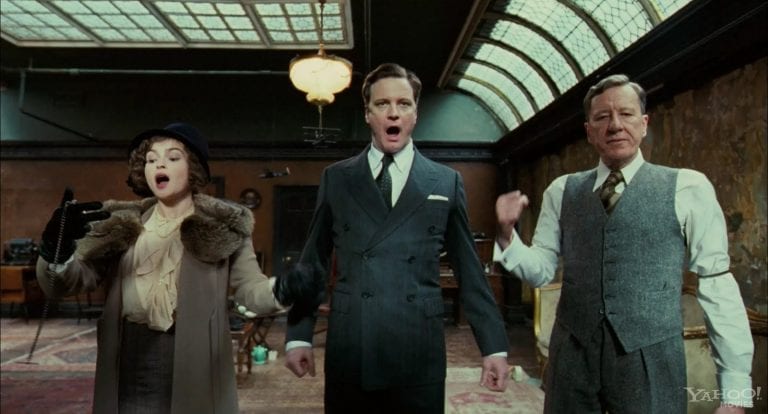
Anyone else clutch their armrests at the final scene of The King's Speech? The tension was enough for us to hold our breath until it was over. We suppose that's the reason why it took home and Oscar for Best Picture. Though The King's Speech was tasteful and inspiring, there were some places were the producers missed the mark.
For one, King George IV's stammer was a wee bit over-exaggerated. According to the Daily Beast, it was actually "relatively mild." In fact, he delivered his speech to the Australian parliament in 1927 without stuttering at all. Of course, in the movie version, Colin Firth couldn't enunciate a single sentence. Because this was overall such a great movie, we'll let it slide.
He delivered speeches well before hiring his speech therapist
Before Logue became the king's speech therapist, King George IV was giving speeches — eloquent ones — before Lionel Logue (played by Jeffery Rush) ever entered the king's life. In fact, if he concentrated hard enough, his stuttering would stop all together. But that wouldn't make much of a movie.
These are smaller strikes in the grand scheme of things, but the etiquette between Logue and the king were probably off base too. For example, it's unlikely that Logue would ever call his Royal Highness "Bertie" or that the king would mock Logue on his Australian roots. Besides that, it's also unlikely that the Duke and Duchess were so boujie that they couldn't use an elevator door, or that Winston Churchill encouraged Edward VIII to abdicate his throne.
Ronald Emmerich's The Patriot (2000)

Hollywood at it's best. There's no other point in history we like to eat up and glorify more than the American Revolution. There's a clear-cut villain (the redcoats) and a clear hero (Mel Gibson/ the American people). Add some cannon fire, bravado, and a sprinkle in some Heath Ledger, and you've got a foolproof recipe for a box office smash.
As for the history surrounding the movie…iffy, at best. The scene where Jason Isaac's character gathered a group of regular townfolk in a burning church never happened. Sure, the British army were ruthless and tactical in wartime (as is the inherent nature of war), but they weren't a sadistic horde of harpies. In fact, the burning church scene actually reflects a much darker moment in history.
They portrayed the redcoats like WWII warfare
No churches were burned in the making of the Revolutionary War, but it was a common tactic used in WWII. It was a National Socialist German Workers' Party practice, and it was meant to incite fear and fan the flames of social tension, which it did effectively. But, to the movie's credit, Col. Tarleton was a real historical figure.
However, there is no record or evidence that suggests he ever broke military rules of engagement or shot a child. Also, we can't leave Mel Gibson's character out of this conversation. He wasn't real, per say, but his character, Benjamin Martin, was based off Francis "The Swamp Fox" Marion. He was a stone-cold killer. He was known to hunt Native Americans for sport and was horrible to his slaves. Not quite hero material.
Michael Bay's Pearl Harbor (2001)

One scene that will forever be ingrained in most movie buffs' minds is the one where Josh Hartnett was standing on the bow of a battleship, trying to free a drowning crew on the other side. Their hands poke out of the haul and grasp desperately for help. They don't get it. Michael Bay's Pearl Harbor will make you ugly cry a la Kim Kardashian.
Though we have no intention of tarnishing an impactful movie that depicts the day that thrust a reluctant America into WWII, we can't help but point out some exaggerations Hollywood added for dramatic effect. Exhibit A: The number of Japanese fighter planes.
There were some inconsistencies that didn't quite match
According to historians, only a handful of Japanese bombers were shot down. However, the movie depicts our boys mowing down a fleet. On another note, though it was acceptable for Americans to support the British in the war efforts, in Rafe McCawley's case (Ben Affleck's character), it was simply impossible.
It was illegal for American citizens to fight for another country while the US took a stance of neutrality. When Rafe joined the Royal Air Force Eagle Squadron, he would have wound up losing his citizenship. In addition to the movie's build-up, his proficiency in the art of origami was…strange. Origami wasn't introduced to foreign troops until after the war (whoops!).
Disney's Pocahontas (1995)

Can you paint with all the colors of the wind? Or is that just another inaccuracy crashing into our eyeballs? Most likely both. Disney's Pocahontas was a childhood classic, and for a good reason. We have a strong, independent, Native American woman teaching us about everything that "has a life, has a spirit, has a name," and "that the heron and the otter are our friends." Cheers to that.
There's a respect for life and nature in the songs that make the Disney rendition easy to love. But, it's hard to swallow in light of the fact that it completely sweeps Pocahontas's true history under the proverbial rug. Let's start with her name. Suprise! It was not Pocahontas.
She was just a little girl
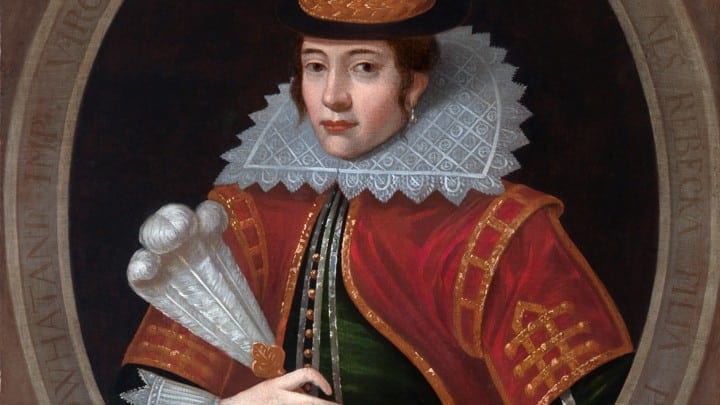
Her real name was Amonute. She was considered the favorite daughter of Chief Powhatan. The name Pocahontas was actually a nickname that meant "playful one," or "misbehaved child." She was known to be a little prankster, and rightly so given that she was only eleven when John Smith and the rest of his men landed in the new world.
In reality, there was some serious tension building between the English settlers and the Native American community. It was so tense in fact, that the chief imprisoned some of John Smith's men. In retaliation, John Smith held Amonute hostage and demanded his men for the return of the chief's daughter. But Chief Powhatan didn't let all of John Smith's men go. As a result, John Smith took Amonute back to England.
Mel Gibson's Braveheart (1995)

FREEDOOOOOM!!! Okay, now that that's out of the way, back to business. William Wallace's blue-face makeup will forever be ingrained into the hearts and minds of Mel Gibson fans. You have all the elements in one film: war, romance, and revenge. On top of that, who doesn't enjoy seeing men running around in kilts? Historians, apparently.
The reason is that plaid kilts were not worn until 300 years after the movie takes place. So, roguish men in kilts were impossible. According to The Telegraph, the real Highlanders wore tunics or yellow shirts. We'll be the first to admit, sounds like a pretty weak, and yellow seems like an unnecessarily bright color for a battle uniform. Camouflage, anyone?
The story of William Wallace was referenced in a poem written by a man named "Blind Harry"
The story about a Scottish warrior who led the First War of Scottish Independence was actually inspired by a 15th-century epic poem called "The Acts and Deeds of Sir William Wallace, Knight of Elderslie." Even so, many historians agree that the poem is not a very accurate record of the Scotsman.
It could be because the author's name was "Blind Harry," formally known as Harry The Minstrel. The manuscript was written in 1488, which was an incredible feat considering the man was blind from birth and would recite the stories about William Wallace. However, contrary to popular belief, William Wallace wasn't thee Braveheart. That title belongs to Robert the Bruce, a Scottish king who fought and won Scotland's independence.
Ronald Emmerich's 10,000 B.C. (2008)

In 10,000 BC, humanity had finally gotten the hang of cognitive thinking, tool building, and agriculture. Humans are rocking the food chain and paving the path to modern-day homosexual sapiendom. But for director Ronald Emmerich, we've mastered agriculture, have already built the pyramids (with freaking wooly mammoths!), and are being chased by saber-tooth cats.
Where do we start? Though we cant rule out that human beings were chased mammoths at the tail end of the ice age, building pyramid-like structures, creating written language, and establishing a complex society, were still a solid 7,000 years away. That's where all those clay tablets came. But wait…unbelievably, there's more.
Navigational tools like the sextant were nonexistent
Metal tools and weapons in the film were a flagrant abuse of poetic license. The movie is supposed to be set in the Stone Age, aptly named because people were using stone tools at the time. Metal was still a few years…or millennia off. The Bronze Age (3300–1200 BC) is where man met metal — sextant included.
According to Slate, sextants weren't in the human toolbox until 1731 AD. Ancient Egyptians had a much primitive version of the astronomy tool and they had some knowledge about astronomy and star navigation. However, combining two complex time periods is just asking criticism from numerous historians. You have to admit though; the mammoths were really cool. All things considered, 10,000 BC gets the W for being the most historically inaccurate movie on this list.
Zack Snyder's 300 (2006)
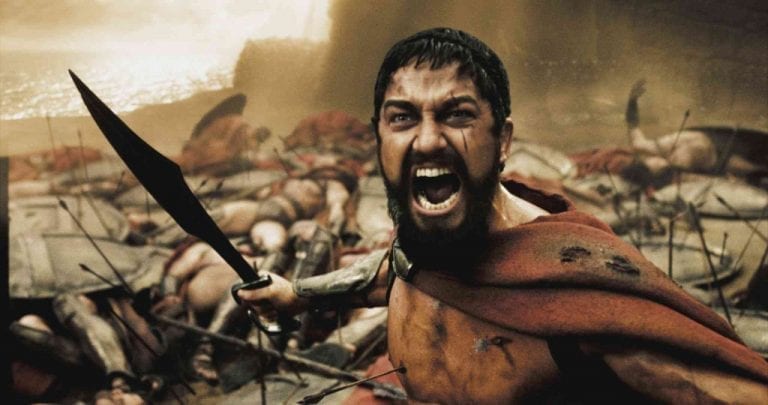
Zack Snyder's Hollywood adaption of Battle of Thermopylae has been every man's testosterone-filled fantasy even since Gerard Butler and his pectorals — the legitimacy of which have been brought into question themselves — screamed "THIS IS SPARTAAAAA!" It's a fan favorite for multiple reasons: blood, war, death…sex.
This film's got it all. Everyone liked it…except maybe historians. The movie, of course, is glaringly inaccurate in its depiction of the true events that transpired during King Leonidas' famed face-off between his army and Xerxes's army. We'll slowly disrobe the inaccuracies of this movie, starting with the wardrobe. (See what we did there?)
The Spartans did not run into battle shirtless
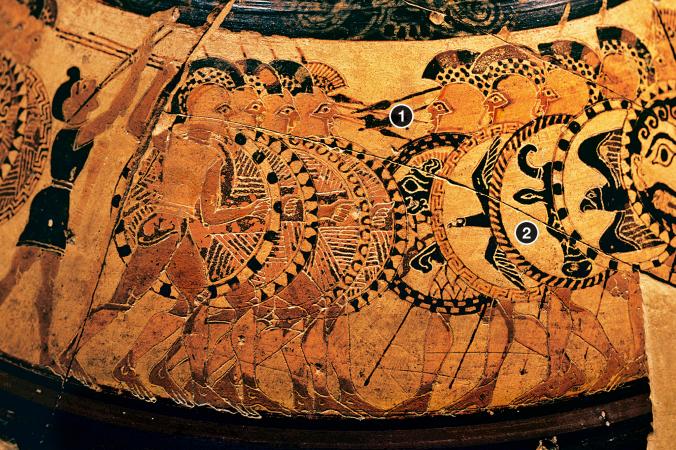
Disappointing as it is, Spartan soldiers did not charge into battle wearing speedos and billowing red crimson capes stained with the blood of their enemies. They were a bit more clothed than that. Spartans wore leg greaves (leg shields), breastplates, and helmets. Why expose vulnerable flesh?
Another inaccuracy is Xerxes and…well, his entire army. Not only were they for the most part clothed and under 7 feet tall, the bedazzled rhino, Indian elephants, and folks from different regions fighting alongside him…yeah, probably didn't happen. The main problem was that the animals and people depicted weren't actually from the area, nor easy to transport across the world.
Edward Zwick's The Last Samurai (2003)
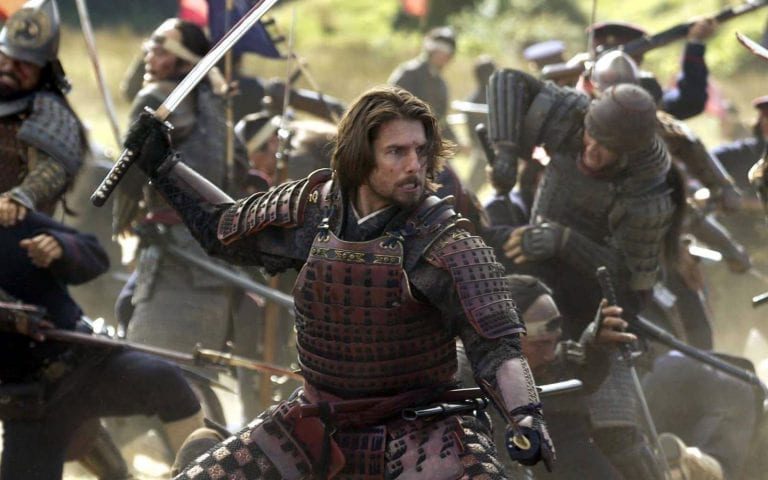
The way of the samurai is often depicted as one that values bravery and comradery. We often think of the samurai as a noble figure wielding a katana, fighting for honor with valor. In Edward Swick's The Last Samurai, Tom Cruise stars as Nathan Algren, a civil war soldier hired by the emperor of Japan to act as a military adviser.
Though the film romanticizes Japanese warrior culture, there is one tiny detail that the director might have overlooked. Though there were military advisers, none of them were American. They were mostly French. While it might just be a faux pas, but there are other parts of the movie that are little…misguided.
Another inaccuracy brought to you by Hollywood is the notion that Japanese soldiers were incapable were of firing a rifle without the help of a foreign military advisor, ostensibly because guns were such a novelty item in Asia. Not so. The truth is most Japanese men were more than capable of handling and shooting their firearms.
In fact, according to BBC, rifles were introduced to Japan in the 16th century by Portuguese merchants (along with tempura…but that's another story). What should also be brought to the viewer's attention: Tom Cruise's character was training as a Bushi warrior. That just wouldn't happen, certainly not as quickly as in the movie, and definitely not with foreigners.
Ron Howard's A Beautiful Mind (2001)

Disclaimer: Ron Howard never intended for his film to accurately portray John Nash's life. At least that's what he said about the matter. He reports on Bustle, "I thought it was my job to try and put the audience inside this character's head and try to offer some insight." Anyways, let's dive in.
There are few things that Howard neglected to address when putting the famed mathematician under the spotlight. First of all: John Nash's life was drastically different from the movie version. Yes, he was a man combating schizophrenia; but there were more dark secrets in Nash's life, including some made-up characters.
His wife was the only thing the film got right
Aside from Nash's wife Alicia, many of the other characters depicted in the film, including Charles and Marcee, were basically all made up. Nash's schizophrenia actually didn't begin showing symptoms until much later in his life. Additionally, visual hallucinations are not a common symptom of the disease.
The only thing some schizophrenic people hallucinate are sounds or voices. John Nash did experience auditory hallucinations, including voices. What was also missing from the film was the mathematician's questionable sexual orientation or his claims of anti-Semitism. His wife denied the allegations on 60 Minutes, but many remained skeptical of the brilliant mathematician's true beliefs.
Wolfgang Peterson's Troy (2004)

Credit where it's due: Generally speaking, it's never a mistake to cast Brad Pitt. He makes a great Achilles. Most of us know the story about the Trojan War, which lasted for a decade, not a few weeks as the movie made it seem. It was a bloody and unnecessary battle between the Spartans and Achaeans sparked by a young prince who has an affair with a married woman/Spartan queen.
It's a classic story from Homer's Iliad. Though the film tried to translate Homer's dactylic hexameter epic, there are just a few (many) things Peterson didn't get right. One of them is Helen's origins. In the film, she makes a declaration that has historians slapping their foreheads. For example, Helen claims that she was married off to the Spartan king at the age of 16 by orders from her mother and father.
That's tragic and all, but it's not exactly true. You see, Helen was already a Spartan-born princess. Her parents were the king and queen of Sparta, and her husband, Menelaus, married into her family and ruled as king of Sparta. In fact, good ol' Helen chose the king herself to be her husband. What's worse? It all looks like Paris and Helen live happily ever after in the film. In the source story, she returns to Sparta after 10 years of war.
Also, the movie portrays Paris (played by Orlando Bloom) as surviving after killing Achilles. But according to the epic poem, Paris brutally perished by Philoctetes' poison arrow during the war. This is also true for Hector's wife, Andromache, who becomes a slave to Achilles's son, Neoptolemus, while someone kills her son, Astyanax. In the movie, of course, both characters escape Troy.
